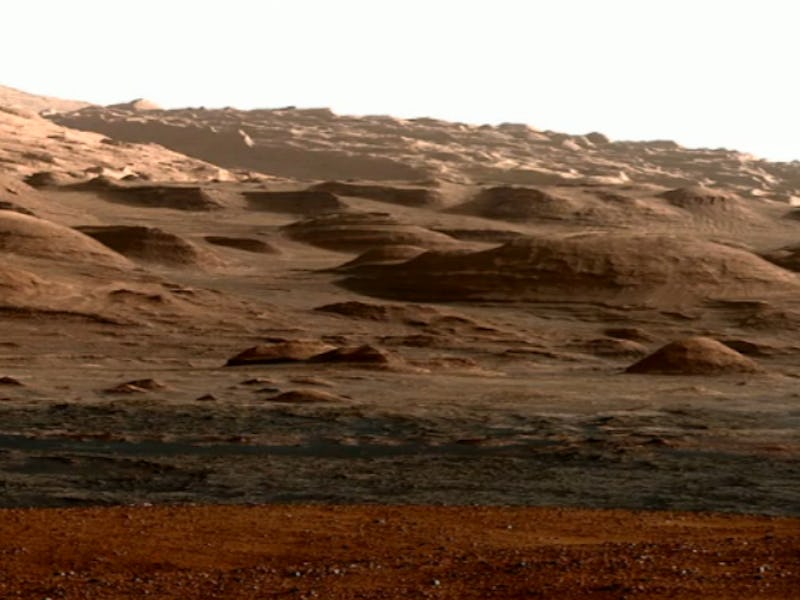Mars Rocks Are How We Will Find Aliens

Much of the topography we can see on Mars is eroding. The surface might be red, but the interior of the planet is actually gray because of its mineral breakdown. Primary igneous materials are being altered into something else, forming an iron-magnesium clay, which is particularly attractive to researchers. This mineral composition — and what we can learn from it — was the subject of a panel Monday during “Searching For Life Across Space And Time: A Workshop”, a two-day conference at the Beckman Center of the National Academies in Irvine, California.
As it happens, NASA’s Curiosity rover recently found on Mars a laminated chert — a rock sample comprising some igneous minerals and lots of crystals and silica — that was compositionally very similar to the early rocks of Earth.
California Institute of Technology professor John Grotzinger said the sorts of rocks that are prevalent on Mars are comparable to ones on Earth.
“It’s not an exact comparison, but sedimentologically, and environmentally, it’s a very similar thing,” Grotzinger said.
Silica, in particular, is the true workhorse here, explained Grotzinger. It’s the “magic mineral that on Earth survived everything that came its way. This means it’s capable of preserving the exact kind of geological record scientists want to study. The fact that Mars appears to be making this stuff, then, is understandably good news.”
Mars is facing its own loss of atmosphere due to erosion by solar winds. The planet is hot, but we know it’s cooling down; water leaves the surface and comes back in cycles. We think there are long-lived lakes on Mars, though Grotzinger said that doesn’t necessarily matter in terms of habitability. Water can sink and rise driven by the whims of the climate and still be interacting with minerals regardless.
Grotzinger and his colleagues aren’t convinced that Mars is a glacial planet. The Curiosity rover, for instance, has not returned evidence of glacial features. To be sure, this might just be a coincidence in selection of various landing sites. But Grotzinger said the sedimentary record still doesn’t look ripe for glacial deposits as the predominant paradigm on the Red Planet’s surface.
“My advocacy is to say … I think we need more small, cheap rovers to go to all these different places,” Grotzinger said. He added that he’d like to see any future small rovers outfitted with imaging spectrometers to help us get a better understanding of the mineralogical diversity of the surface, an area of study in which we’ve fallen short in the past.
Partnering up with private entities, as we’ve had a lot of success with this year already, would be a good way to facilitate smaller, more tightly focused missions that ask and answer specific questions about specific surface regions. Each new mission in this vein puts us one step closer to colonization.
“Mars is an exciting planet,” Grotzinger said. “There’s no reason to not love it.”